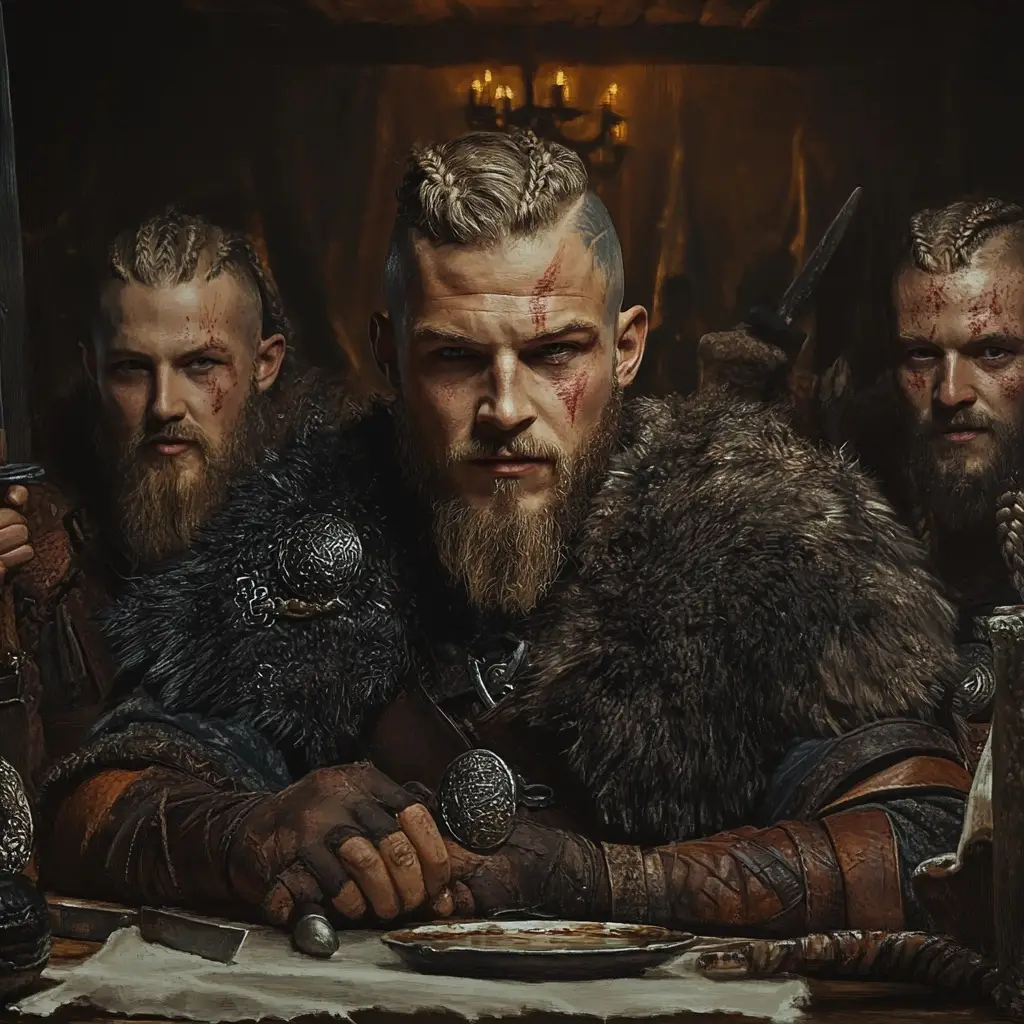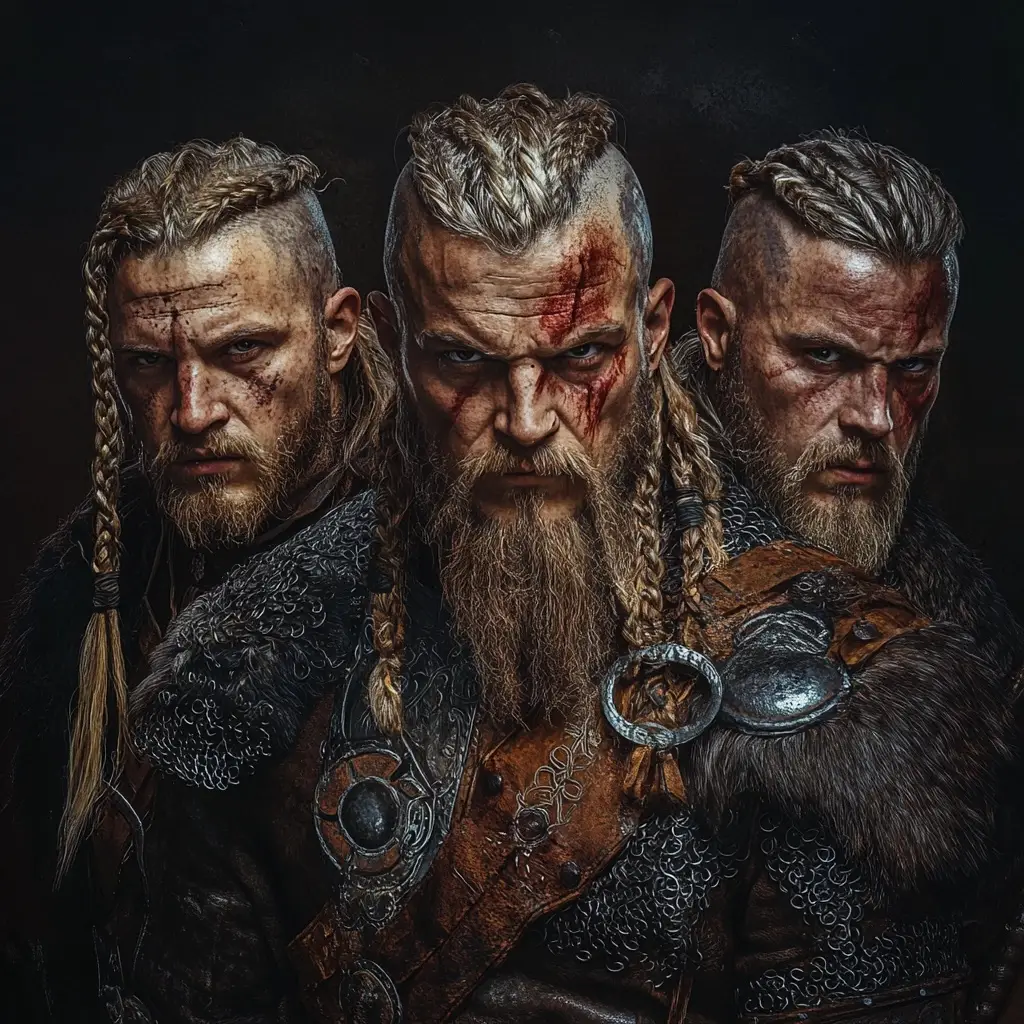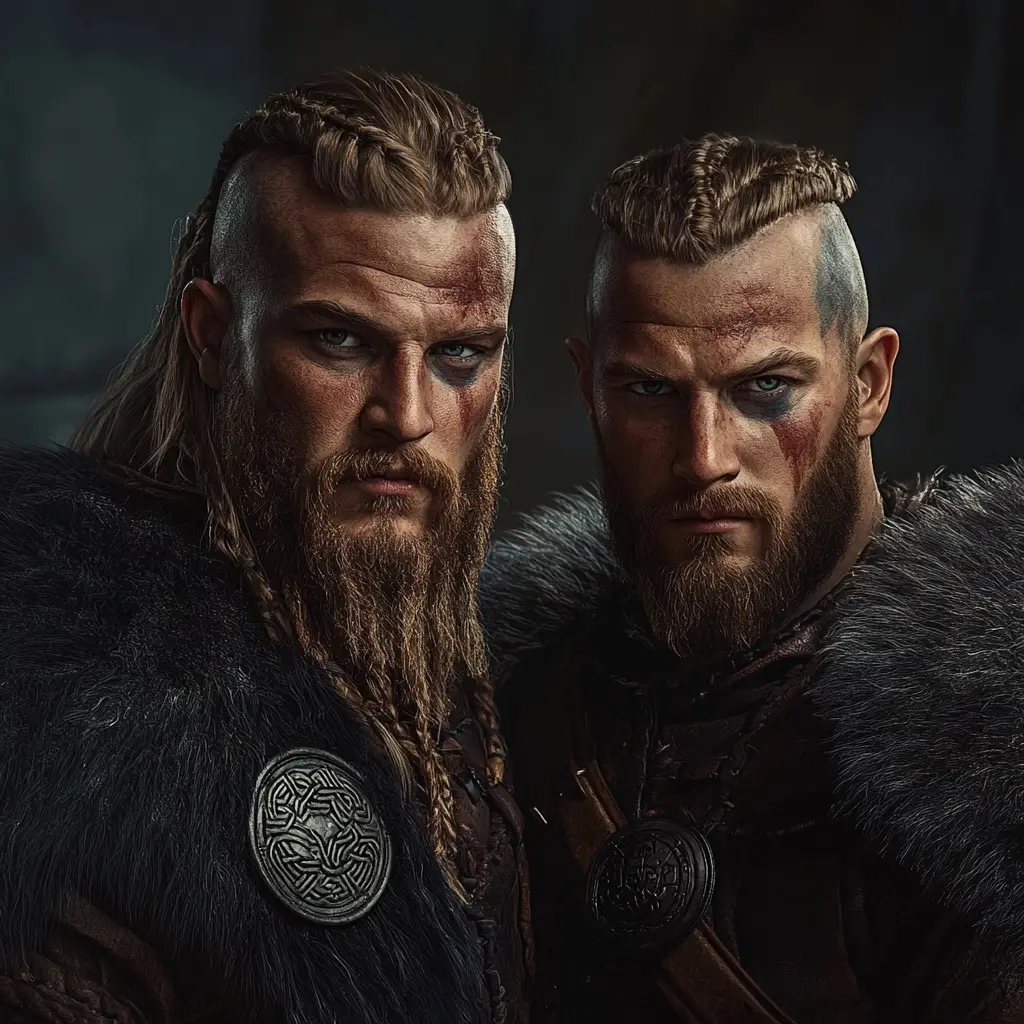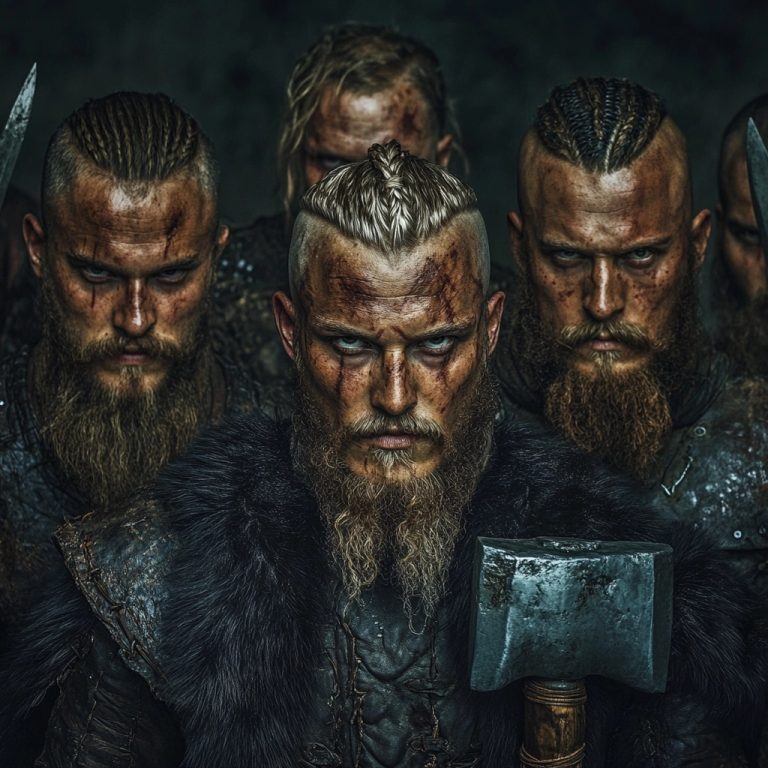⸻
The Sons of Ragnar Lothbrok
Ragnar Lothbrok, the legendary Viking warrior and king, is one of the most iconic figures in Norse mythology and sagas. While it is debated whether Ragnar was a real historical figure or a composite of multiple individuals, the stories of his sons are well-documented in both legend and historical chronicles. His sons are known not only for avenging his death but also for expanding Norse influence across England and Europe.
1. Ivar the Boneless
Ivar the Boneless is perhaps the most famous of Ragnar’s sons. He is portrayed in the sagas as cunning, ruthless, and highly intelligent. Despite his physical disability – described variously as having no bones, being extremely flexible, or suffering from a medical condition – Ivar was a brilliant strategist and feared leader.
• Role in History: Leader of the Great Heathen Army that invaded Anglo-Saxon England in 865 AD.
• Key Achievements: Played a major role in capturing York and defeating several Anglo-Saxon kingdoms.
• Legacy: Remembered as a master tactician with a reputation for cruelty, especially in avenging Ragnar’s death.
2. Bjorn Ironside
Bjorn Ironside was a legendary sea-farer and warrior, known for his strength and bravery. According to the sagas, he earned his nickname because he was said to be invulnerable in battle, with armour-like skin.
• Role in History: Led raids into France, Spain, and the Mediterranean; reputedly reached the coasts of Italy and North Africa.
• Key Achievements: Founded the royal line of the Munsö dynasty in Sweden, which would later become part of the early Swedish kingdom.
• Legacy: Seen as a symbol of Norse exploration and raiding prowess.
3. Sigurd Snake-in-the-Eye
Sigurd Snake-in-the-Eye was named for the distinctive mark in his eye, which resembled a serpent. He was known as a brave warrior and a loyal son.
• Role in History: Ruled parts of Denmark and possibly Norway. Participated in Viking campaigns in England alongside his brothers.
• Key Achievements: Helped solidify Viking rule in parts of Scandinavia and the British Isles.
• Legacy: Considered a noble and honourable Viking prince.
4. Hvitserk (also known as Hvitsärk)
Hvitserk is less clearly defined in historical sources, with some accounts merging his identity with that of other brothers. However, he is often depicted as a courageous warrior who fought alongside his brothers.
• Role in History: Fought in the Great Heathen Army’s campaigns across England.
• Key Achievements: Participated in numerous battles; according to one saga, he eventually met a tragic end at the hands of a Slavic king.
• Legacy: Symbolises the loyalty and unity of Ragnar’s sons in avenging their father.
5. Ragnald (possibly historical)
Some sources mention Ragnald as a son of Ragnar, though this is debated. He may be a historical figure linked to Norse rule in Ireland or the Isle of Man.
• Role in History: Associated with Norse-Gaelic kingship in the British Isles.
• Key Achievements: Possibly founded or influenced dynasties in Ireland and the Scottish Isles.
• Legacy: Represents the spread of Norse influence across the western seaboard of the British Isles.
⸻
The Legacy of Ragnar’s Sons
Together, Ragnar’s sons were instrumental in shaping the Viking Age. Their expeditions and settlements extended Norse culture and control far beyond Scandinavia, impacting the political landscape of medieval Europe. Whether viewed as historical figures or legendary heroes, the sons of Ragnar Lothbrok remain powerful symbols of Viking ambition, resilience, and warfare.



